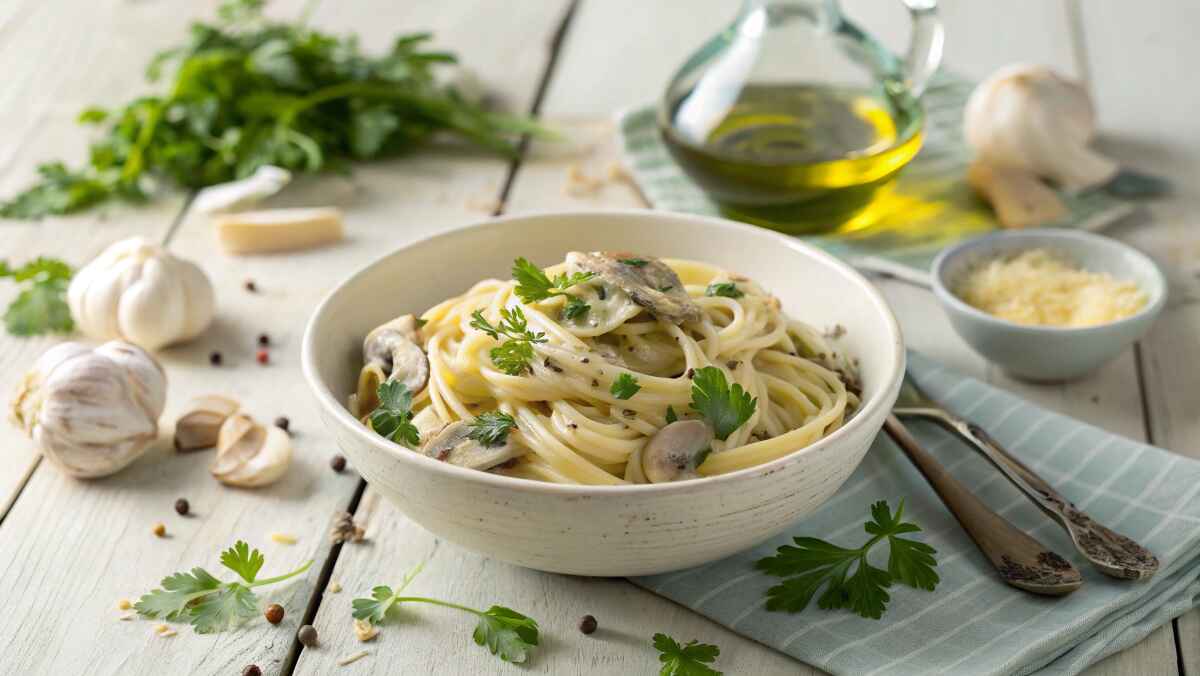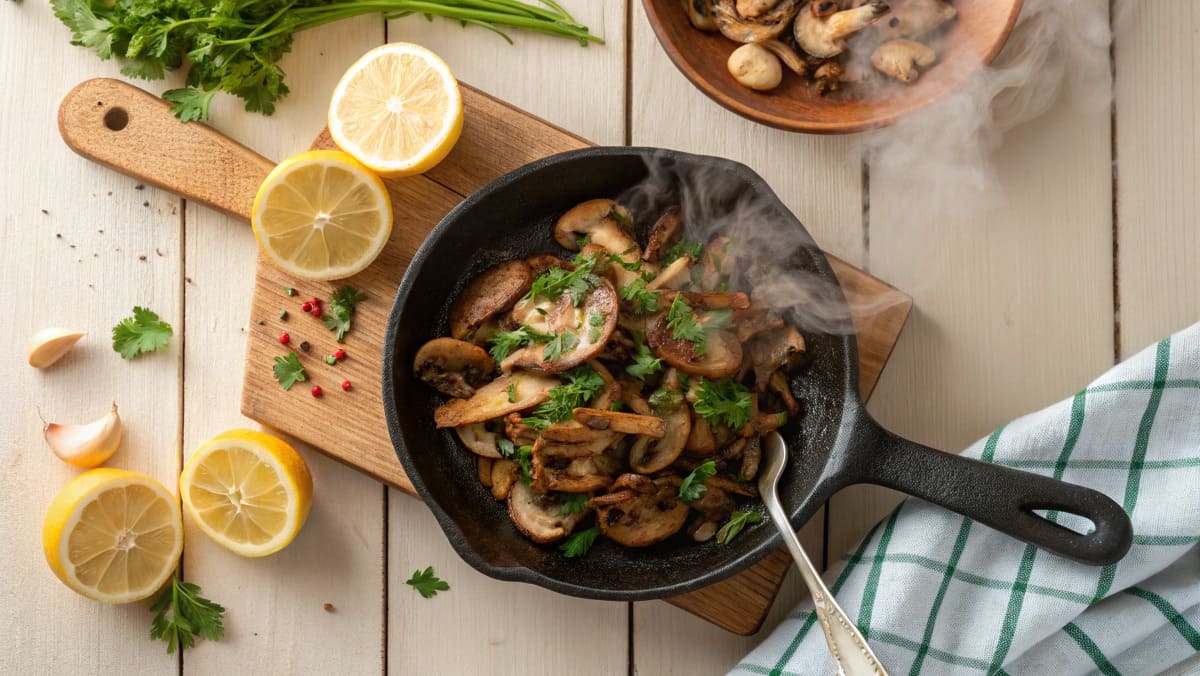The potato mille-feuille is an elegant dish that blends simplicity and sophistication. Inspired by the classic French dessert mille-feuille, known for its delicate layers of pastry, this savory twist uses thinly sliced potatoes layered with cream and baked to perfection. The result is a dish that’s crisp and golden on the outside, soft and creamy on the inside, and full of rich, buttery flavor.
For those who love experimenting with potato-based dishes, you might also like our White Sweet Potato Nutrition and Recipes, which explores a unique alternative to regular potatoes. If you’re looking for comforting potato meals, try our Hash Brown Potato Soup, a rich and creamy option perfect for colder days.
The Origins of Mille-Feuille and Its Potato Adaptation
The term “mille-feuille” translates to “a thousand leaves,” traditionally describing the many thin layers of puff pastry in a dessert. However, the savory version swaps pastry for potatoes, adding a comforting twist to this iconic dish.
The dessert mille-feuille, originating in 17th-century France, has long been a symbol of fine dining. Over time, chefs and home cooks began adapting the concept, transforming simple ingredients like potatoes into stunning creations. For more insights into French culinary traditions, check out our Complete Guide to French Pastries.
Key Ingredients for Potato Mille-Feuille
The beauty of Potato Mille-Feuille lies in its simplicity—just a few key ingredients come together to create a dish that is both elegant and delicious. Choosing the right ingredients ensures the perfect balance of crispy edges, creamy layers, and rich flavors.
1. Potatoes – The Foundation of the Dish
The choice of potato is crucial for achieving the ideal texture. You want potatoes that hold their shape while still turning soft and creamy after baking.

- Best Types:
- Yukon Gold – Slightly waxy with a naturally buttery flavor, creating a creamy texture without becoming mushy.
- Russet Potatoes – Higher in starch, resulting in a fluffier, melt-in-your-mouth consistency. They also crisp up beautifully.
- Preparation:
- Peel the potatoes to ensure uniform layers and a smooth texture.
- Slice thinly and evenly using a mandoline for precision—thin layers allow for perfect stacking and even cooking.
2. Cream – The Key to a Silky Texture
Cream adds richness and binds the layers together for a luscious, velvety bite.
- Best Choices:
- Heavy Cream (Double Cream) – Provides the richest, most indulgent texture.
- Milk (Whole or 2%) – A lighter alternative that still maintains some creaminess.
- Plant-Based Alternatives – Almond or cashew cream can be used for a dairy-free version, offering a mild nuttiness.
3. Cheese (Optional) – For Extra Flavor and a Crispy Finish
Adding cheese enhances the flavor profile and creates a golden, crispy top.
- Best Cheeses to Use:
- Parmesan – Provides a sharp, salty bite and crisps up nicely.
- Gruyère – Melts beautifully, adding a nutty and slightly sweet flavor.
- Cheddar – A bolder, tangy option that adds richness.
- How to Use:
- Between Layers – Sprinkle a small amount between potato slices for a deeper flavor.
- On Top – A final layer of cheese creates a golden, crispy crust.
4. Butter or Oil – Enhancing Flavor and Crispiness
A touch of fat helps achieve caramelized, crispy edges and prevents the layers from sticking together.
- Butter – Classic choice for a rich, indulgent flavor.
- Olive Oil – A lighter, healthier alternative that still adds depth.
5. Seasonings – The Perfect Balance of Flavor
While the ingredients are simple, seasoning is essential to elevate the dish.
- Salt & Pepper – The foundation of flavor; enhances the natural taste of the potatoes.
- Garlic – Adds a subtle savory depth. Minced garlic or garlic powder works well.
- Thyme & Rosemary – Fresh or dried, these herbs bring an earthy aroma that pairs beautifully with potatoes.
- Nutmeg (Optional) – Just a pinch can add warmth and complexity, commonly used in French potato dishes like gratin dauphinois.
6. Optional Additions – Customizing to Your Taste
If you want to take your Potato Mille-Feuille to the next level, consider adding extra ingredients for flavor variety and texture contrast.
- Vegetables:
- Zucchini or Sweet Potatoes – Adds color and a slightly sweet note.
- Beetroot – A visually striking option with an earthy, slightly tangy flavor.
- Proteins:
- Diced Bacon or Pancetta – Adds a smoky, salty bite.
- Smoked Salmon – Introduces a sophisticated, briny contrast.
By selecting high-quality ingredients and fine-tuning the flavors to your preference, you can create a Potato Mille-Feuille that is both restaurant-worthy and easy to make at home. Whether you keep it classic or experiment with additions, this dish is guaranteed to impress.
Why Make Potato Mille-Feuille?
Potato Mille-Feuille is a dish that combines simplicity, elegance, and versatility, making it a must-try for both home cooks and gourmet food lovers. Whether you’re preparing a refined side dish for a special dinner or looking for a satisfying vegetarian option, this layered potato creation delivers rich flavors and a sophisticated presentation with minimal ingredients.
1. Incredible Versatility
One of the greatest strengths of Potato Mille-Feuille is its adaptability. It can be served in multiple ways, making it suitable for different occasions and pairings:
- As a luxurious side dish, it complements proteins like steak, roasted chicken, or pan-seared scallops, enhancing their flavors with its creamy, buttery texture.
- As a vegetarian main course, it provides a satisfying, rich, and hearty option that stands on its own.
- It can be sliced into bite-sized portions for elegant appetizers or served as a centerpiece dish for a dinner party.
2. Simple Ingredients, Gourmet Result
Despite its sophisticated appearance, this dish requires only a handful of basic ingredients: potatoes, cream, butter, and seasoning. The magic happens in the layering and slow cooking, which transforms these humble elements into a dish with a silky texture, crispy edges, and deep, comforting flavors. It’s a perfect example of how French-inspired cooking elevates simple ingredients into something truly special.
3. Endless Customization Options
Potato Mille-Feuille is highly customizable, allowing you to tailor it to your taste preferences:
- Herbs & Aromatics: Infuse the dish with flavors like thyme, rosemary, garlic, or nutmeg for added depth.
- Cheese Variations: Incorporate cheeses like Gruyère, Parmesan, or Comté for a more indulgent and flavorful experience.
- Alternative Vegetables: Layer in thin slices of sweet potatoes, zucchini, or mushrooms for a unique twist.
- Lighter Options: Swap heavy cream for milk or a dairy-free alternative to create a lighter version.
With its golden, crispy top and delicate, creamy layers, Potato Mille-Feuille is a dish that feels both comforting and refined. Whether you’re making it for a casual meal or an elegant dinner party, its balance of flavor, texture, and presentation ensures it will be a crowd-pleaser every time.
Creative Variations
- Vegan Potato Mille-Feuille
- Replace dairy cream with coconut or cashew cream.
- Use nutritional yeast for a cheesy, umami flavor.
- Sweet Potato Mille-Feuille
- Swap regular potatoes for sweet potatoes for a naturally sweeter version. Pair with cinnamon or drizzle with maple syrup for a sweet-savory twist.
- International Twists
- Italian: Add layers of pesto and mozzarella.
- Middle Eastern: Use za’atar or sumac for a spiced touch.
- Layered Presentation
- Alternate potato slices with beetroot or squash for a visually stunning effect.
Step-by-Step Recipe for Potato Mille-Feuille
1. Preparing the Potatoes
- Peel and wash the potatoes, then slice them into thin, even slices (about 1/8 inch thick). Use a mandoline for precision.
2. Layering the Stack
- Preheat the oven to 325°F (160°C).
- Grease a baking dish and line it with parchment paper.
- Arrange a layer of potato slices, slightly overlapping. Brush with melted butter or cream and sprinkle with salt, pepper, and herbs. Repeat until all potatoes are used.
3. Baking
- Cover the dish with foil to trap moisture and bake for 1 hour and 20 minutes, or until tender when pierced with a knife.
4. Cooling and Compressing
- Remove the dish from the oven and let it cool slightly. Place a second baking dish or flat object on top, weighing it down with heavy cans. Refrigerate overnight to set.
5. Frying for a Crispy Finish
- Remove the potato stack from the dish and cut it into neat squares or rectangles.
- Heat butter in a skillet and fry each piece until golden and crispy on all sides.
Culinary Tips for Success
- Use Clarified Butter
- It browns better than regular butter and ensures a rich flavor.
- Slice Evenly
- Uniform slices help the dish cook evenly and look professional.
- Compress the Layers
- This step is essential for creating the clean, defined layers that make this dish so impressive.
Pairing Suggestions
- With Seared Scallops
- The creamy, buttery potatoes enhance the delicate flavor of scallops.
- With Grilled Steak
- A hearty pairing that balances the richness of the potatoes with the bold flavors of steak.
- Vegetarian Option
- Serve with a creamy mushroom sauce or roasted vegetables.
Nutritional Breakdown
| Nutrient | Per Serving | % Daily Value |
|---|---|---|
| Calories | 300–400 kcal | 15–20% |
| Total Fat | 20–25 g | 25–30% |
| Saturated Fat | 12–15 g | 60–75% |
| Carbohydrates | 25–30 g | 8–10% |
| Protein | 5–8 g | 10–15% |
| Fiber | 3–4 g | 10–15% |
Common Pitfalls and How to Avoid Them
- Soggy Layers
- Coat each layer with butter or cream to prevent waterlogging.
- Uneven Cooking
- Compress the layers evenly before baking to ensure uniform doneness.
- Breakage During Frying
- Chill thoroughly before slicing to maintain the structure.
Potato mille-feuille combines the simplicity of basic ingredients with the sophistication of fine dining. Its creamy, layered texture and elegant presentation make it perfect for any occasion. Whether you’re hosting a dinner party or preparing a cozy family meal, this dish will impress every time.
Looking for more layered dishes? Explore the beautiful Mille-Feuille Nabe, a Japanese hotpot that combines neatly layered cabbage and pork in a delicious broth.
Would you like more potato-based meal ideas? Check out What Goes Well with Mashed Potatoes to find the perfect pairings for your next dish!




